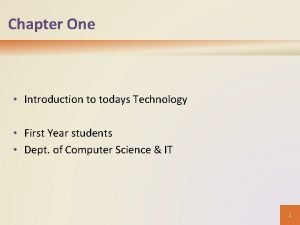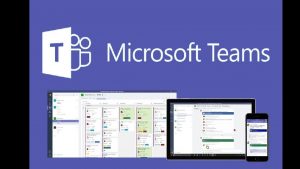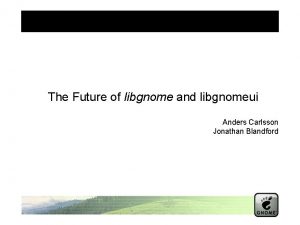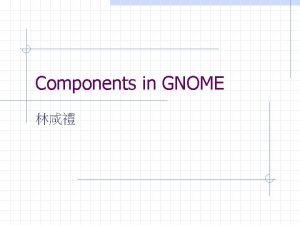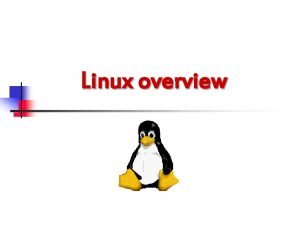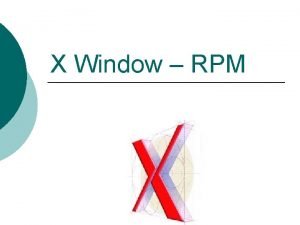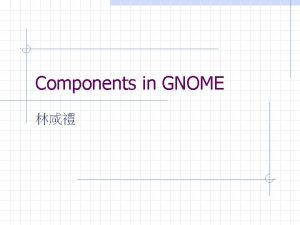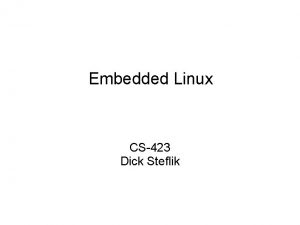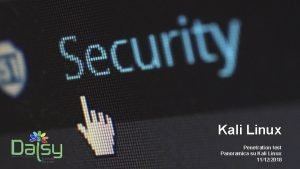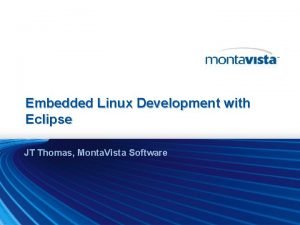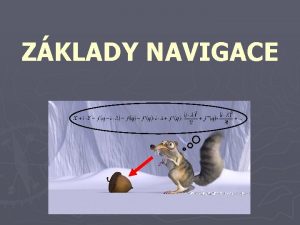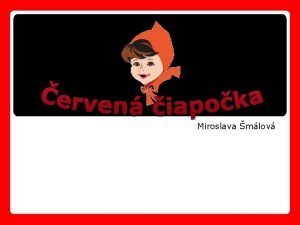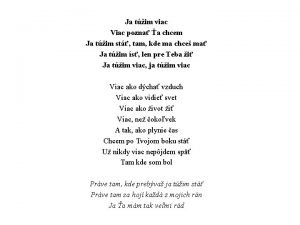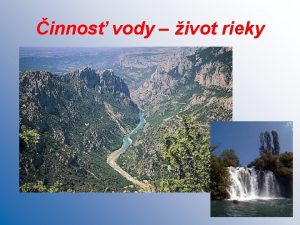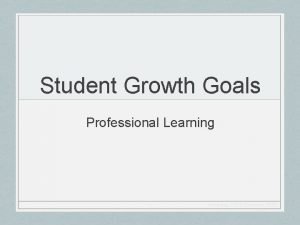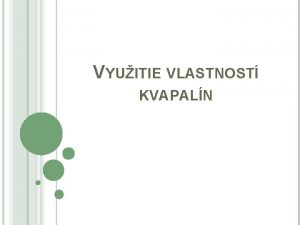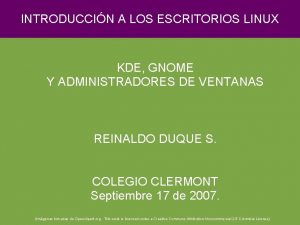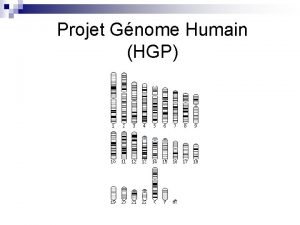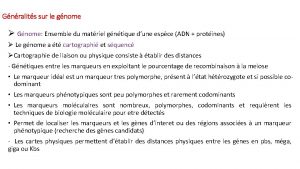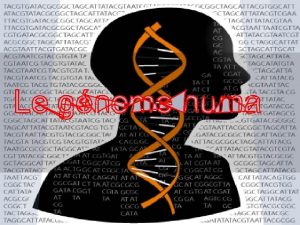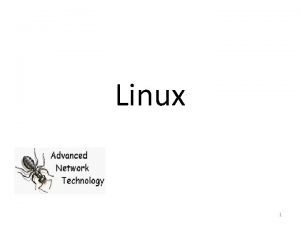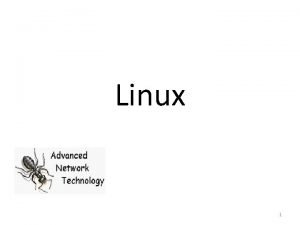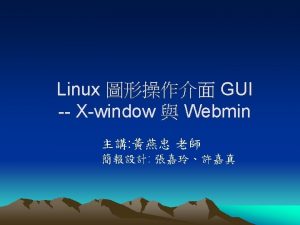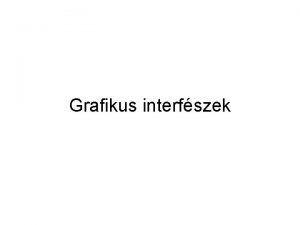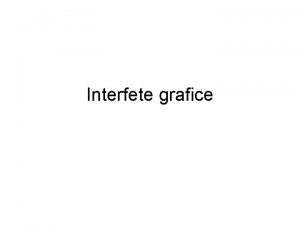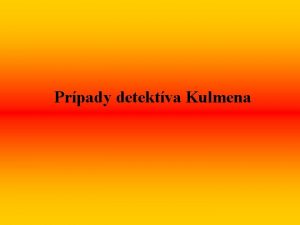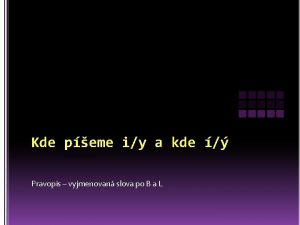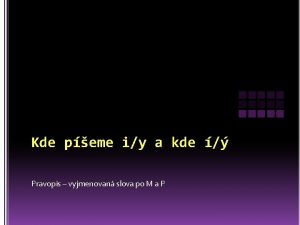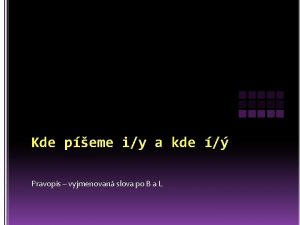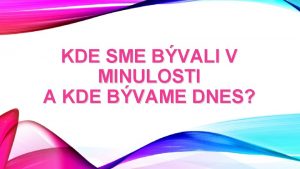LINUX Desktops Using the GNOME and KDE Desktops






















- Slides: 22

LINUX Desktops Using the GNOME and KDE Desktops Learning Red Hat Enterprise Linux & Fedora, 4 th Edition By Bill Mc. Carty, 2004 1

LINUX Desktops n n Red Hat Enterprise Linux and Fedora Core support two desktops: q GNOME and KDE 2

Using the GNOME Desktop n When you first log in to your Red Hat Enterprise Linux or Fedora Core system, q q you will see the GNOME desktop The contents of your desktop may be slightly different 3

Switching to GNOME from KDE n If you want to launch a GNOME session, q but KDE is configured as the default desktop environment: n n select Gnome from the Session menu of the system login screen. Of course, GNOME must be installed in order for this to work. 4

The GNOME Desktop Content 5

The GNOME Desktop n Right click to: q q n Creating a new folder Creating a new launcher Opening a terminal window. . . Pager q provides what's called a virtual desktop n n n a desktop that's larger than the size of your monitor screen Home Directory icon q to access the file manager called Nautilus 6

The GNOME Desktop n Drive icons q If you have permission n q and media is present, n q to mount a CD-ROM or floppy drive, your desktop includes an icon representing the drive You can see the content of the media n Double click on the icon 7

The GNOME Desktop n Start Here icon q To access to GNOME facilities: n Applications q n Preferences q n The Applications icon lets you launch various applications. to view and modify a variety of preferences, including § those for the desktop, § document handlers, § user interface look and feel, § multimedia, § peripherals. System Settings q q access to tools for viewing and modifying the system configuration 8

The GNOME Desktop n n n Trash icon q view files that have been deleted by using Nautilus the shell's rm command q are not stored in the trash To process trash q Simply double-click the icon q GNOME launches Nautilus n n q To restore a deleted file, n q to view the folder where deleted files are stored you can drag it to a new location To permanently delete files n n right-clicking the Trash icon select Empty Trash 9

The GNOME Panel n the GNOME panel q n appears along the bottom edge of the display you can move the panel q q to a different location; click and drag the panel n n to the desired location. The panel functionally q q resembles the Windows taskbar; you can use it n n n to launch programs, switch from one program to another, and perform other tasks 10

Default GNOME panel n n n n Main menu q presents a menu to choose a variety of programs. Web browser q Launches the Mozilla web browser. Email q Launches the Evolution email client Open. Office Writer q Launches the Open. Office word processor Open. Office Impress q Launches the Open. Office presentation creator Open. Office Calc q Launches the Open. Office spreadsheet, described Print Manager q Manages printers and documents queued for printing 11

Default GNOME panel n n Pager Task list q q The task list contains a button for each active task. Clicking a task's button n Volume Control q q n Lets you adjust the level of sound appears only if your system has a sound adapter. Alert Notification Tool q n raises the task's window to the front of the screen Alerts you when errata or updates are available. Clock q The clock displays your system's current time. 12

Using GNOME Terminal n n Similar to the MS-DOS Prompt window provides a window in q q n To launch GNOME terminal, q q n to type shell commands and view their output right-click the desktop select New Terminal from the pop-up menu. You can open multiple GNOME terminal windows if you like. 13

View of GNOME Terminal 14

Editing terminal settings n The Edit => Current Profile q lets you configure the operation of GNOME terminal 15

Using the KDE Desktop n If your system is configured to use GNOME q q you can launch a KDE session, select KDE from the Session menu n q of the system login screen. KDE must be installed! 16

View of The KDE desktop 17

Using Konqueror n n KDE's file manager and web browser To launch: q click the home directory icon n n q click the Start (red hat) icon n q resembles a small house superimposed on a larger file folder and then clicking Home Konqueror displays the content of your n /home folder 18

n clicking the Tree View icon, n q it is the rightmost icon on Konqueror's toolbar, you can cause Konqueror n n to display information in a format resembles the familiar two-pane layout q q used by the Microsoft Windows Explorer and GNOME's Nautilus. 19

Konqueror: displaying folder contents 20

Konqueror's detailed mode in Tree View 21

End of Chapter LINUX Desktops 22
 Differentiate among laptops tablets desktops and servers
Differentiate among laptops tablets desktops and servers Mpcs desktop
Mpcs desktop Gnome code
Gnome code Gnome outline
Gnome outline Kde architecture
Kde architecture Johari window là gì
Johari window là gì Maestro sugar gnome
Maestro sugar gnome Gnome outline
Gnome outline Linux linux security module m1 support
Linux linux security module m1 support Uclinux
Uclinux Kali pentest
Kali pentest Embedded linux development using eclipse
Embedded linux development using eclipse Nautický trojúhelník
Nautický trojúhelník Siedmimi pravopis
Siedmimi pravopis Daj mi ruku dam ti srdce len ho nezlomí
Daj mi ruku dam ti srdce len ho nezlomí Miesto kde vyviera voda zo zeme sa nazýva
Miesto kde vyviera voda zo zeme sa nazýva Miesto kde vyviera voda zo zeme
Miesto kde vyviera voda zo zeme Kde inclusion of special populations
Kde inclusion of special populations Kde administration code training
Kde administration code training Kde
Kde Skalnica horska spolocenstvo
Skalnica horska spolocenstvo Kde všade sa využíva vlastnosť spojených nádob
Kde všade sa využíva vlastnosť spojených nádob Usadzovanie v beznom zivote
Usadzovanie v beznom zivote
